Uncategorized
TON Surges on UAE Golden Visa News; Crypto Community Reacts With Excitement and Doubt
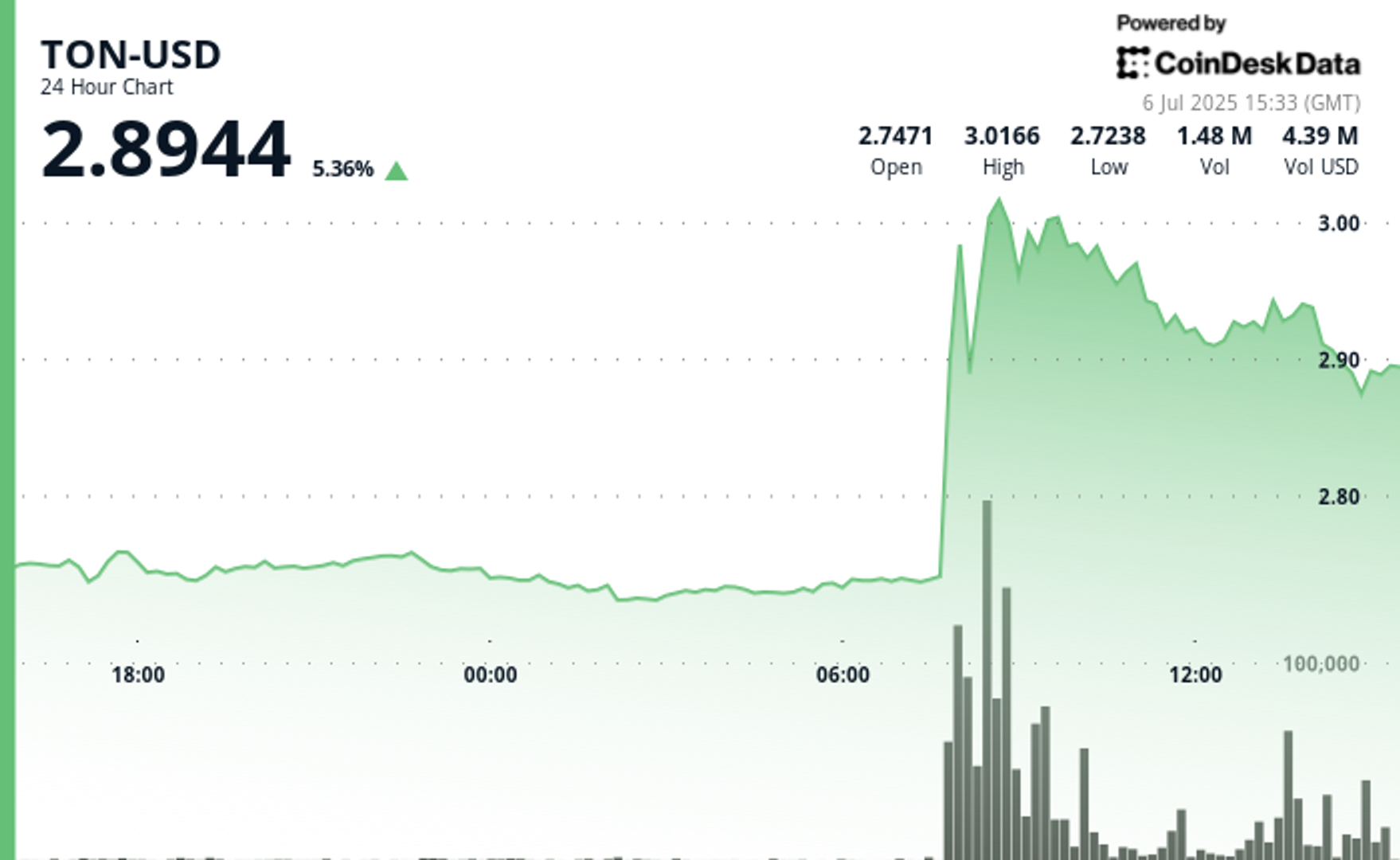
On July 6, Max Crown, CEO of the TON Foundation, announced on X a groundbreaking initiative offering Toncoin (TON) holders the exclusive chance to secure a 10-year UAE Golden Visa.
The program requires applicants to stake $100,000 worth of toncoin for three years and pay a one-time processing fee of $35,000. After the three-year lock-up period, staked funds can be unlocked, and during this time, applicants earn an estimated 3–4% annual percentage yield (APY) on their staked tokens.
The TON Foundation’s website highlights several key benefits: fast approval within seven weeks from document submission, a simple process without the need to purchase real estate or meet income thresholds, and inclusion of family members — spouse, children, and parents — at no extra cost beyond standard government fees. The staking is conducted through decentralized smart contracts on the TON blockchain, ensuring transparency and security.
The program claims to offer a capital-efficient alternative to traditional UAE Golden Visa routes, which the TON Foundation says typically require a minimum investment of approximately $540,000 in real estate or fixed deposits, often tied to illiquid assets and longer processing times. The TON Golden Visa initiative is touted as a faster, more affordable, and digitally native pathway to UAE residency, aligning with the country’s ambition to become a global crypto and Web3 hub.
The announcement had an immediate impact on Toncoin’s market performance. Shortly after the news broke, Toncoin’s price surged by 12%. At the time of writing, the token trades around $2.8944, reflecting a 5.36% increase over the past 24 hours. Additionally, the current 24-hour average trading volume is approximately 251.54% higher than the 30-day average, signaling heightened market interest and activity, according to CoinDesk Research’s technical analysis model.
Despite the enthusiasm, the announcement has generated controversy within the crypto community. Bobby Ong, co-founder and COO of CoinGecko, praised the partnership as an “amazing story” that could attract whales and provide strong buy support for Toncoin, although he expressed hope that the initiative is not a temporary scheme.
Conversely, Joe HedgedHog, an investment partner at Sigil Fund, pointed out that this is not an official UAE government partnership but rather a third-party legal firm using TON as a proxy to assist clients applying for the Golden Visa under the entrepreneur category. He noted that the firm could have used any cryptocurrency and that the staking requirement serves more as a token utility sink than a government mandate.
Further skepticism came from the Head of Strategy & Business Development at Gearbox Protocol, who described the announcement as misleading. According to this perspective, the legal firm receives the non-refundable $35,000 fee and attempts to submit applications to the UAE government, which ultimately decides on approval. The staked TON balance is only one of several requirements and may no longer be relevant under updated rules. The absence of blanket approval for TON stakers means that acceptance is uncertain, and the program may primarily serve as a marketing tool coupled with token utility.
Changpeng Zhao (CZ), co-founder and former CEO of Binance, expressed cautious support for TON founder Pavel Durov but emphasized the need to “trust but verify.” He noted that such a program would typically require an official government partnership and announcement, which has not yet been confirmed.
The UAE entrepreneur visa category, which this program appears to target, is designed for individuals owning economic projects of a technical or innovative nature. Applicants must provide approval letters from an accredited UAE auditor confirming the project’s value (at least 500,000 AED), local authorities verifying the project’s innovative character, and an accredited UAE business incubator to establish the proposed activity in the country.
The Open Network (TON) is a decentralized, scalable layer-1 blockchain originally developed by Telegram co-founder Nikolai Durov and now maintained by the TON Foundation and its community. It features a multi-blockchain architecture with a masterchain and multiple shardchains, using proof-of-stake consensus and advanced routing protocols to enable fast, low-cost transactions and support a wide range of decentralized applications.
- Toncoin (TON) is thjis blockchain’s native cryptocurrency; it used for transaction fees, staking, governance,and powering decentralized services. Integrated with Telegram, toncoin facilitates payments and rewards within the app’s ecosystem, with a capped supply of 5 billion tokens.
Technical Analysis Highlights
Price surged from $2.75 to a peak of $3.06, representing an overall range of $0.34 (12.4%).
- Rally began abruptly during the 7:00 hour on 6 July, when volume spiked to nearly 13 million.
- Extraordinary 57.5 million volume surge in the 8:00 hour propelled TON to its high.
- Support has formed around $2.86-$2.89 with high-volume buying.
- Resistance appears at $3.03, suggesting the token has established a new trading range.
- In the last 60 minutes from 6 July 15:12 to 16:11, TON experienced a significant price surge of 2.4%.
- Dramatic breakout occurred at 15:48 when volume spiked to 1.68 million tokens.
- Token reached a peak of $2.93 at 15:50 before establishing a new support level around $2.90-$2.91.
Disclaimer: Parts of this article were generated with the assistance from AI tools and reviewed by our editorial team to ensure accuracy and adherence to our standards. For more information, see CoinDesk’s full AI Policy.
Uncategorized
Is Ethereum’s DeFi Future on L2s? Liquidity, Innovation Say Perhaps Yes

Ethereum is in the midst of a paradox. Even as ether hit record highs in late August, decentralized finance (DeFi) activity on Ethereum’s layer-1 (L1) looks muted compared to its peak in late 2021. Fees collected on mainnet in August were just $44 million, a 44% drop from the prior month.
Meanwhile, layer-2 (L2) networks like Arbitrum and Base are booming, with $20 billion and $15 billion in total value locked (TVL) respectively.
This divergence raises a crucial question: are L2s cannibalizing Ethereum’s DeFi activity, or is the ecosystem evolving into a multi-layered financial architecture?
AJ Warner, the chief strategy officer of Offchain Labs, the developer firm behind layer-2 Arbitrum, argues that the metrics are more nuanced than just layer-2 DeFi chipping at the layer 1.
In an interview with CoinDesk, Warner said that focusing solely on TVL misses the point, and that Ethereum is increasingly functioning as crypto’s “global settlement layer,” a foundation for high-value issuance and institutional activity. Products like Franklin Templeton’s tokenized funds or BlackRock’s BUIDL product launch directly on Ethereum L1 — activity that isn’t fully captured in DeFi metrics but underscores Ethereum’s role as the bedrock of crypto finance.
Ethereum as a layer-1 blockchain is the secure but relatively slow and expensive base network. Layer-2s are scaling networks built on top of it, designed to handle transactions faster and at a fraction of the cost before ultimately settling back to Ethereum for security. That’s why they’ve become so appealing to traders and builders alike. Metrics like TVL, the amount of crypto deposited in DeFi protocols, highlight this shift, as activity is moved to L2s where lower fees and quicker confirmations make everyday DeFi far more practical.
Warner likens Ethereum’s place in the ecosystem to a wire transfer in traditional finance: trusted, secure and used for large-scale settlement. Everyday transactions, however, are migrating to L2s — the Venmos and PayPals of crypto.
“Ethereum was never going to be a monolithic blockchain with all the activity happening on it,” Warner told CoinDesk. Instead, it’s meant to anchor security while enabling rollups to execute faster, cheaper and more diverse applications.
Layer 2s, which have exploded over the last few years because they are seen as the faster and cheaper alternative to Ethereum, enable whole categories of DeFi that don’t function as well on mainnet. Fast-paced trading strategies, like arbitraging price differences between exchanges or running perpetual futures, don’t work well on Ethereum’s slower 12-second blocks. But on Arbitrum, where transactions finalize in under a second, those same strategies become possible, Warner explained. This is apparent, as Ethereum has had fewer than 50 million transactions over the last month, compared to Base’s 328 million transactions and Arbitrum’s 77 million transactions, according to L2Beat.
Builders also see L2s as an ideal testing ground. Alice Hou, a research analyst at Messari, pointed to innovations like Uniswap V4’s hooks, customizable features that can be iterated far more cheaply on L2s before going mainstream. For developers, quicker confirmations and lower costs are more than a convenience: they expand what’s possible.
“L2s provide a natural playground to test these kinds of innovations, and once a hook achieves breakout popularity, it could attract new types of users who engage with DeFi in ways that weren’t feasible on L1,” Hou said.
But the shift isn’t just about technology. Liquidity providers are responding to incentives. Hou said that data shows smaller liquidity providers increasingly prefer L2s where yield incentives and lower slippage amplify returns. Larger liquidity providers, however, still cluster on Ethereum, prioritizing security and depth of liquidity over bigger yields.
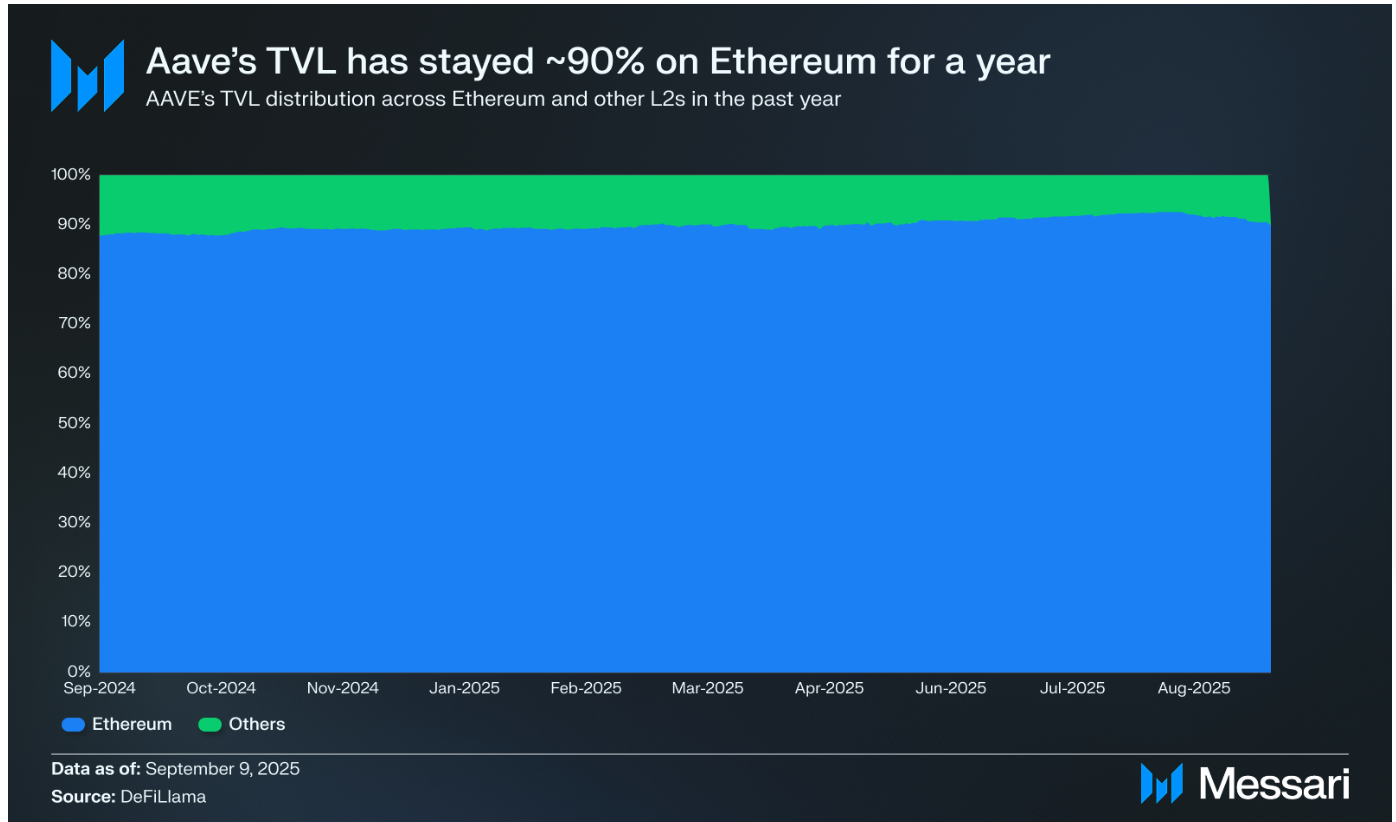
Interestingly, while L2s are capturing more activity, flagship DeFi protocols like Aave and Uniswap still lean heavily on mainnet. Aave has consistently kept about 90% of its TVL on Ethereum. With Uniswap however, there’s been an incremental shift towards L2 activity.
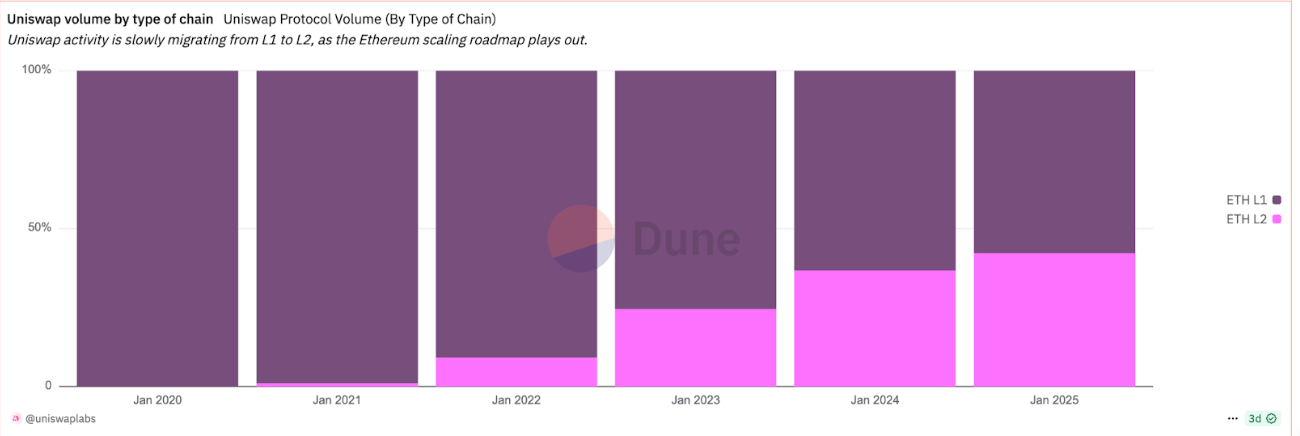
Another factor accelerating L2 adoption is user experience. Wallets, bridges and fiat on-ramps increasingly steer newcomers directly to L2s, Hou said. Ultimately, the data suggests the L1 vs. L2 debate isn’t zero-sum.
As of September 2025, about a third of L2 TVL still comes bridged from Ethereum, another third is natively minted, and the rest comes via external bridges.
“This mix shows that while Ethereum remains a key source of liquidity, L2s are also developing their own native ecosystems and attracting cross-chain assets,” Hou said.
Ethereum thus as a base layer appears to be cementing itself as the secure settlement engine for global finance, while rollups like Arbitrum and Base are emerging as execution layers for fast, cheap and creative DeFi applications.
“Most payments I make use something like Zelle or PayPal… but when I bought my home, I used a wire. That’s somewhat parallel to what’s happening between Ethereum layer one and layer twos,” Warner of Offchain Labs said.
Read more: Ethereum DeFi Lags Behind, Even as Ether Price Crossed Record Highs
Uncategorized
CoinDesk 20 Performance Update: Avalanche (AVAX) Gains 4.6% as Index Moves Higher
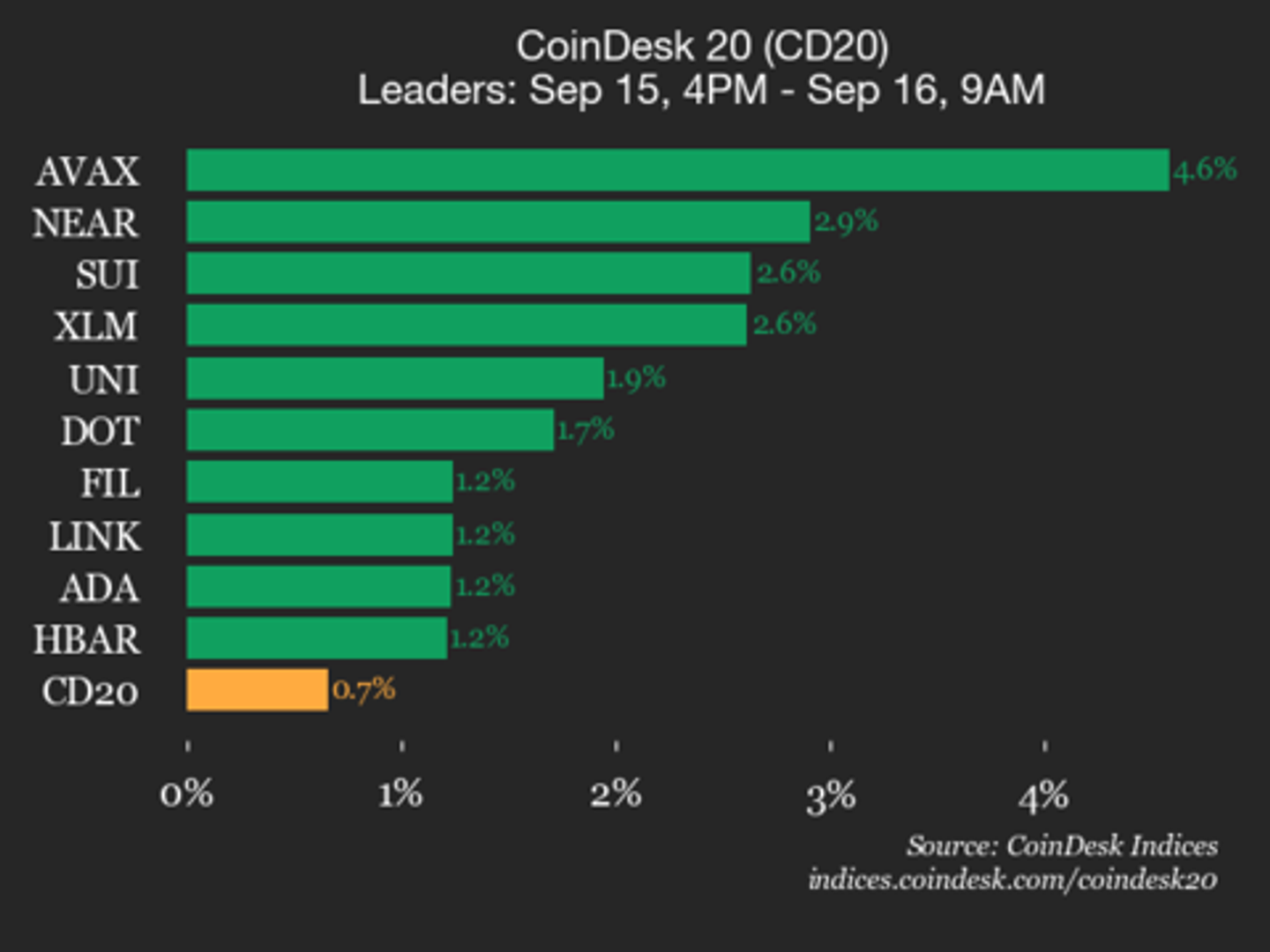
CoinDesk Indices presents its daily market update, highlighting the performance of leaders and laggards in the CoinDesk 20 Index.
The CoinDesk 20 is currently trading at 4267.12, up 0.7% (+27.81) since 4 p.m. ET on Monday.
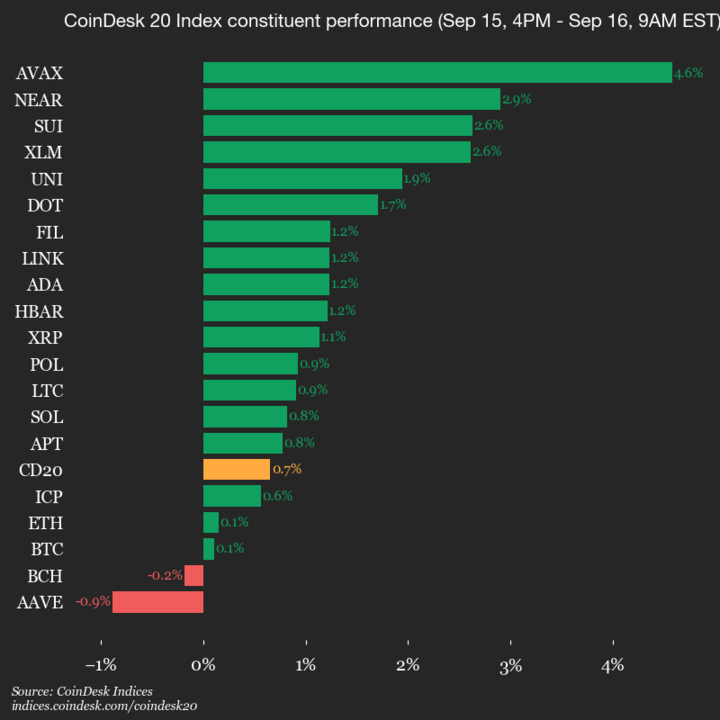
Eighteen of 20 assets is trading higher.
Leaders: AVAX (+4.6%) and NEAR (+2.9%).
Laggards: AAVE (-0.9%) and BCH (-0.2%).
The CoinDesk 20 is a broad-based index traded on multiple platforms in several regions globally.
Uncategorized
Santander’s Openbank Starts Offering Crypto Trading in Germany, Spain Coming Soon
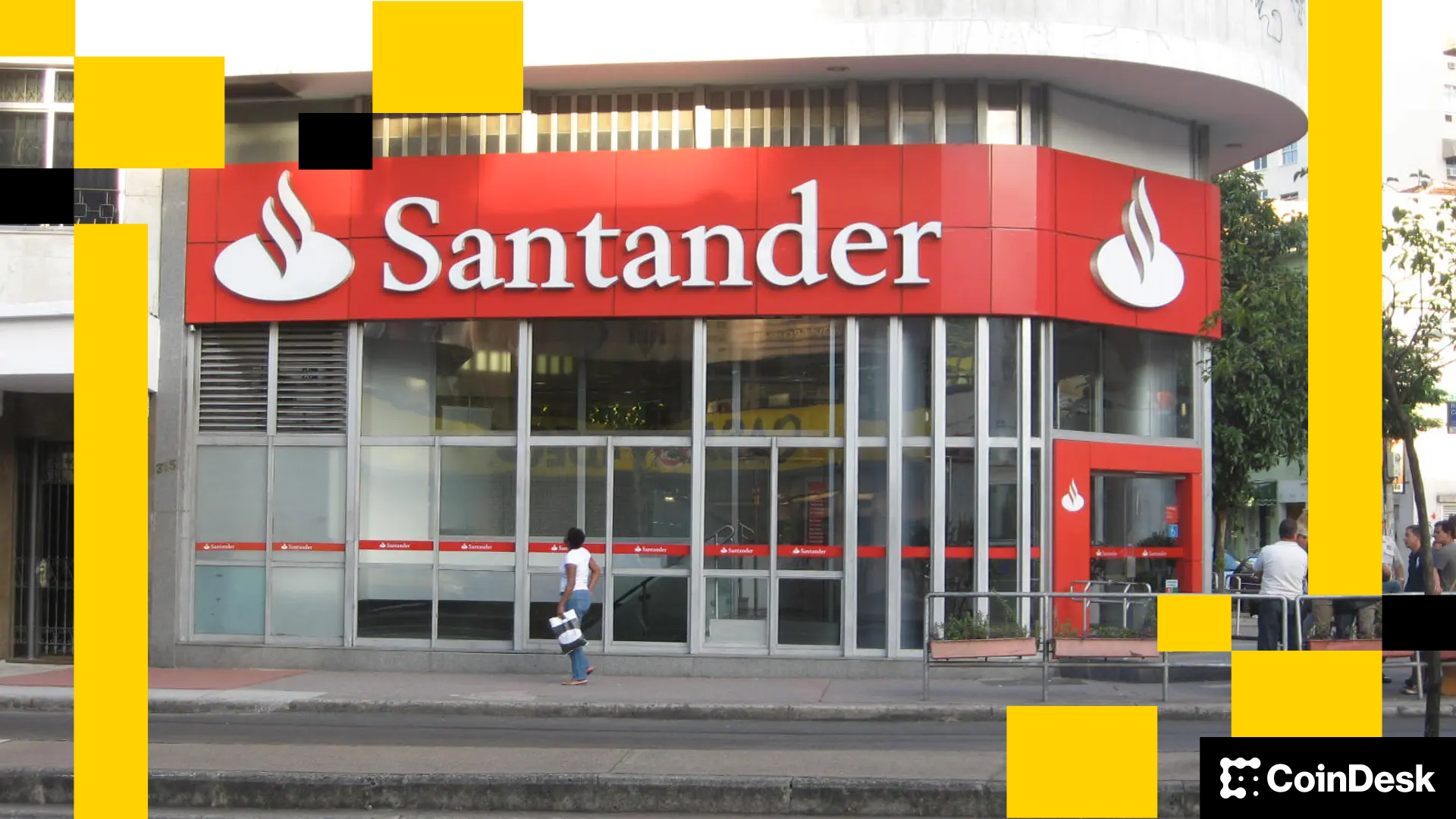
The digital banking arm of Spanish financial giant Santander Group, Openbank, opened cryptocurrency trading for customers in Germany, with plans to add its home market in the next few weeks.
The new service allows users to buy, sell and hold five popular cryptocurrencies: bitcoin (BTC), ether (ETH), litecoin (LTC), polygon (MATIC) and cardano (ADA), according to a press release. The cryptocurrencies are available alongside stocks, ETFs and investment funds.
Customers can trade without moving funds to an external platform, keeping all investments in one place under Santander’s umbrella, the bank said.
“By incorporating the main cryptocurrencies into our investment platform, we are responding to the demand of some of our customers,” said Coty de Monteverde, head of crypto at Grupo Santander.
The bank charges a 1.49% fee per transaction, with a 1 euro ($1.2) minimum, and does not include custody fees. The bank said it plans to add more cryptocurrencies and new features, such as crypto-to-crypto conversions, in coming months.
Santander Private Bank was back in 2023 making headlines when it started letting clients with accounts in Switzerland trade BTC and ETH. It selected crypto safekeeping technology firm Taurus for custody.
-

 Business11 месяцев ago
Business11 месяцев ago3 Ways to make your business presentation more relatable
-

 Fashion11 месяцев ago
Fashion11 месяцев agoAccording to Dior Couture, this taboo fashion accessory is back
-

 Entertainment11 месяцев ago
Entertainment11 месяцев ago10 Artists who retired from music and made a comeback
-

 Entertainment11 месяцев ago
Entertainment11 месяцев ago\’Better Call Saul\’ has been renewed for a fourth season
-

 Entertainment11 месяцев ago
Entertainment11 месяцев agoNew Season 8 Walking Dead trailer flashes forward in time
-

 Business11 месяцев ago
Business11 месяцев ago15 Habits that could be hurting your business relationships
-

 Entertainment11 месяцев ago
Entertainment11 месяцев agoMeet Superman\’s grandfather in new trailer for Krypton
-

 Entertainment11 месяцев ago
Entertainment11 месяцев agoDisney\’s live-action Aladdin finally finds its stars





